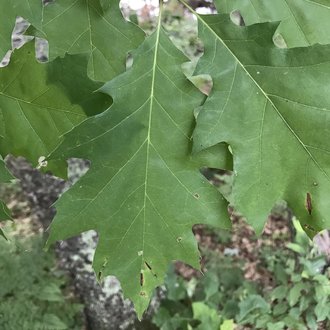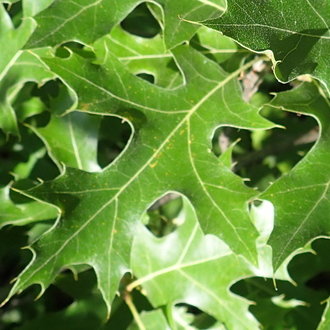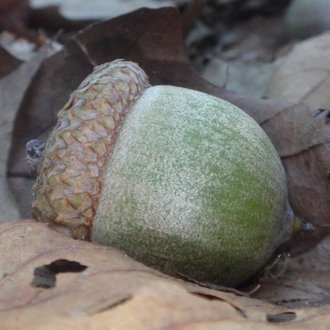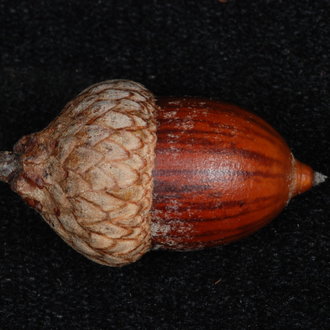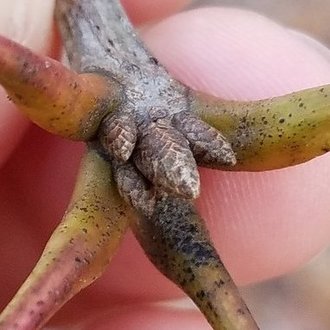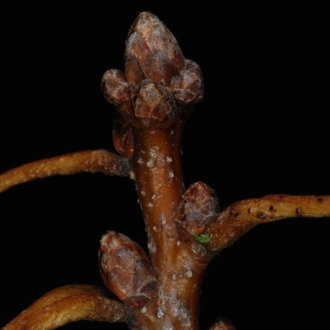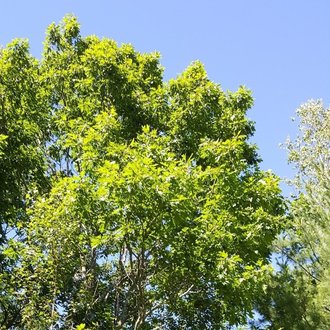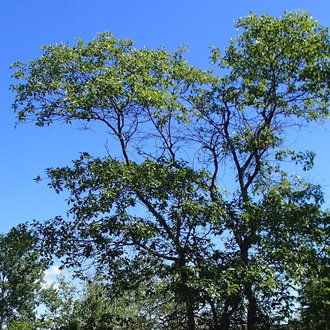Northern Red Oak vs Hill's Oak
These two species are occasionally confused where their ranges overlap, but they can be distinguished with skill at any time of year. Northern red oak prefers richer sites and is much more shade tolerant. The two species can hybridize and form intergrades, so it may not be possible to identify all individuals.
Northern Red Oak (Quercus rubra) | Hill's Oak (Quercus ellipsoidalis) |
A large tree, one of the dominant components of the forests of eastern North America, native to a wide range of the northeastern U.S. and Canada, extending well into the south. | A cold-hardy, drought-tolerant oak mostly found in a small region of the upper midwestern U.S. Also called Northern Pin Oak, but more closely related to other species than pin oak. |
Leaves have 7-11 lobes. Leaves, especially those growing in lower light, have shallow sinuses between lobes, their depth usually less than halfway the distance to the midrib. Photo © Aaron Boers, CC BY 4.0. | Leaves have 5-7 lobes. Sinuses between lobes are consistently deeper, on mature trees usually extending at least halfway to the midrib. Photo © Rob Foster, CC BY 4.0. |
Acorn caps usually cover closer to 1/4 of the nut, occasionally as much as 1/3. Acorns usually more stout. Photo © Chris Kratzer, CC BY-SA 4.0. | Longer, more narrow acorns having caps that cover 1/3rd to 1/2 of the nut. Photo © Doug Goldman, CC BY 4.0. |
Buds less conspicuously angular. More sharply pointed. Terminal buds average longer (4-7 mm) and less pubescent at the tip. More bud scales visible. Photo © Leila Dasher, CC BY 4.0. | Buds more conspicuously 5-angled in cross-section. More ovoid (blunted or rounded) in shape. Terminal buds average shorter (3-5 mm) and more pubescent at the tip. Fewer bud scales visible. Photo © Doug Goldman, CC BY 4.0. |
Denser, more full crown, reflecting greater shade tolerance. Photo © Charlie Hohn, CC BY 4.0. | Sparser, more open crown, reflecting lesser shade tolerance and higher light needs. Photo © Rob Foster, CC BY 4.0. |
References & External Resources
These short lists show only links helpful for ID. For a complete list of references and resources also covering other aspects of ecology, visit the links section of the full article on each plant, which is the first entry here.



